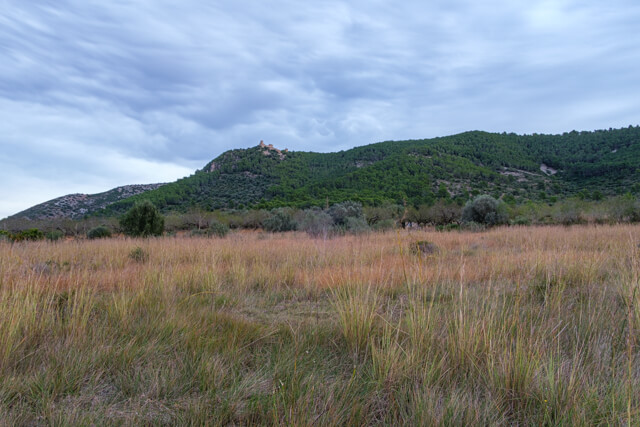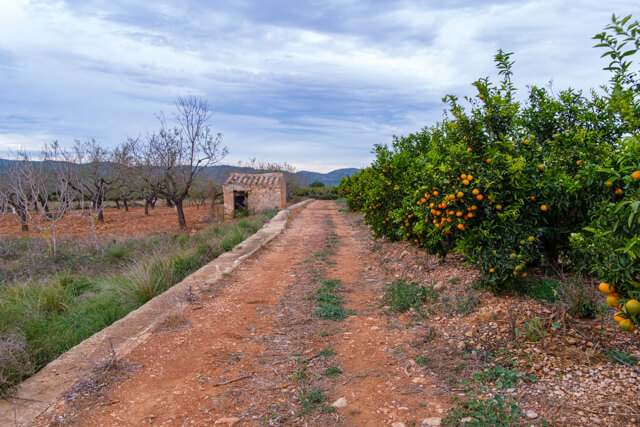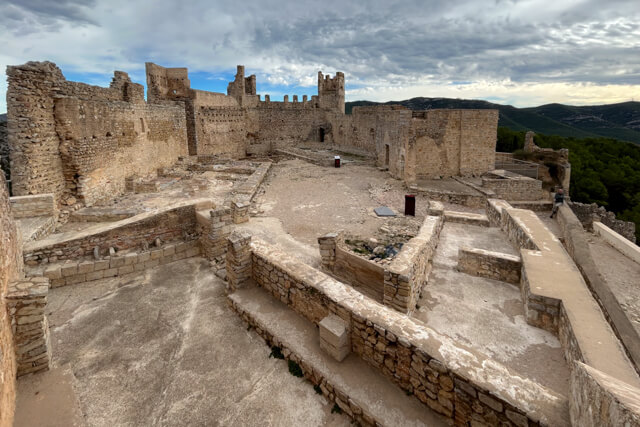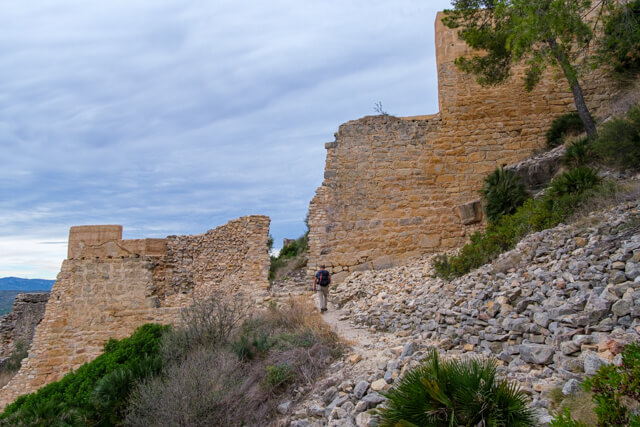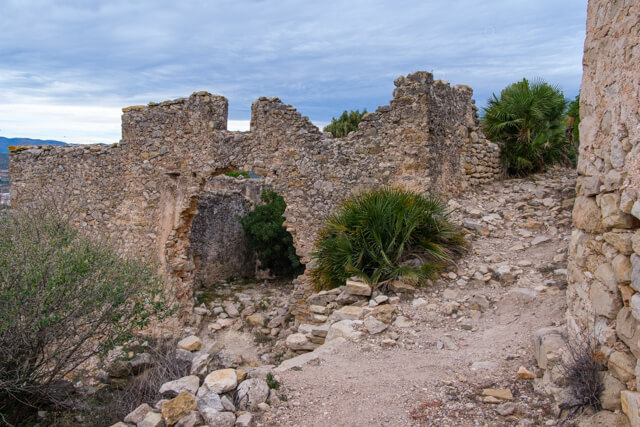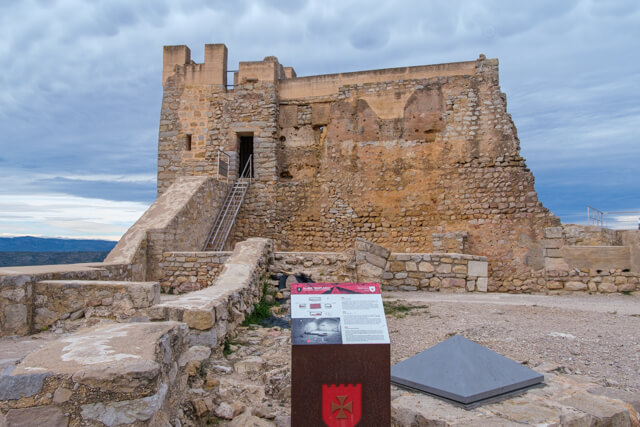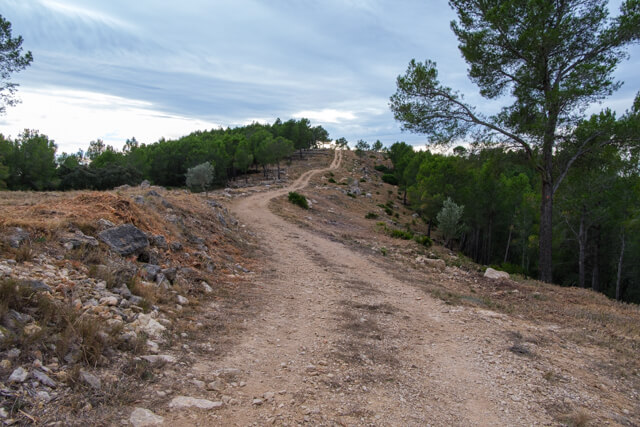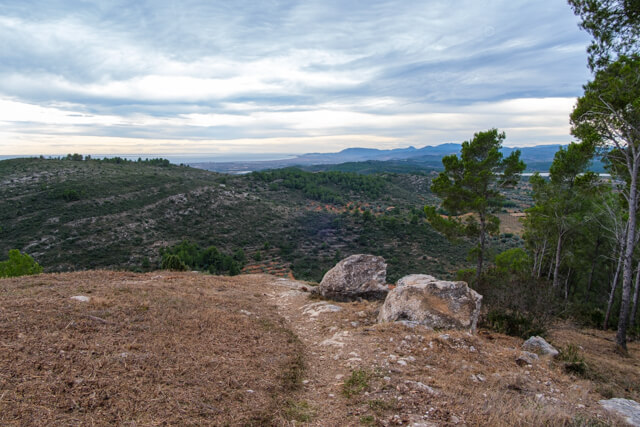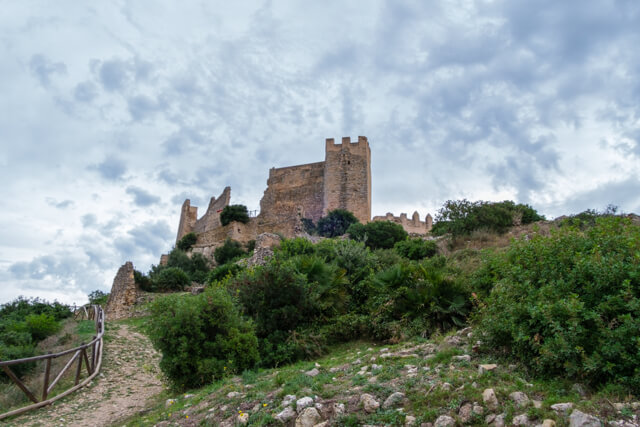
Walk through orange and olive groves to Xivert Castle, where you can visit the ruins of a Moorish village and the Templar fortress. The view of the Sierra d'Irta and the surrounding area is truly fantastic.
Distance: 6.5 km.
Time: 2h30.
Grade: Moderate.
Type: Circular.
Gps Track: Yes.
Route description: Yes.
Wheelchair: Not suitable.
Dog: Allowed.
Height gain: 313 meters.
Trail: 100% unpaved.
Marking: None.
Hiking shoes recommended.
Advertisement.
Racó de Puig.
The walk starts at the Cruz del Francés over unpaved roads to the foot of the hill on which the Castillo de Xivert stands. Here you start the climb to the partly restored castle where you visit the fortress and the ruins of the Moorish village. You walk back to the starting point over the wide ridge of Racó de Puig, with beautiful views.
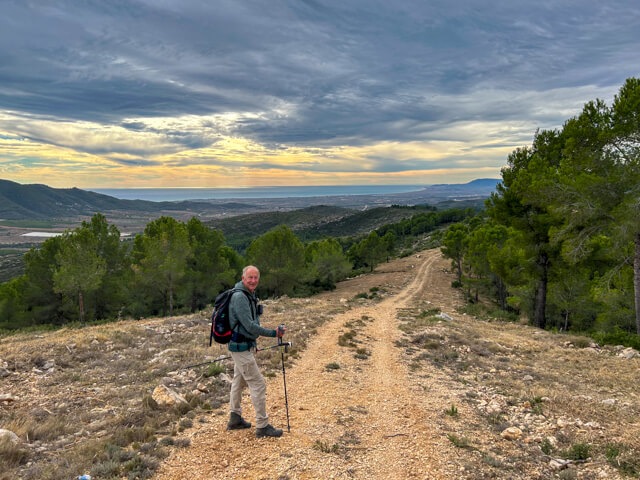
Download PDf for route description and map.
At the foot of the hill on which the Castillo de Xivert stands, you can take a sporty alternative route through a beautiful valley.
POI 1 - Cruz del Francés.
Cross that pays tribute to the heroes of the War of Independence.
No additional information.
POI 2 & 3 - Castillo de Xivert.
The castle of Xivert is a castle from the 10th century located in the Sierra d'Irta. It is built on a 370 meter high hill overlooking a valley. In the Middle Ages the castle was of great strategic importance, as it controlled the road between Barcelona & Valencia. Construction of the castle was started by the Moors in the 10th century. Nowadays, influences from the Moors are still visible, such as an Arabic inscription in the wall of the castle. The castle remained in the hands of the Moors until 1234, when King James I of Aragon conquered the area. The Muslim, Moorish population peacefully surrendered control of the castle, allowing them to continue living in their village. King James I gave the castle to the Templars, a Christian knighthood. The Templars further expanded the castle, with a second defensive wall and 2 round towers. A few years after the Templars were abolished by the Pope in 1312, the castle was taken over by the Order of Our Lady of Montesa. In the 16th century, the region suffered several attacks by Barbary pirates and a rebellion in which the village next to the castle was sacked. As a result of the rebellion, King Philip III decided that the Moors must convert to Christianity or face exile. After the exile of the Moorish population, the village next to the castle was abandoned. In the 17th century the castle lost its military function and fell into disrepair.
No additional information.



